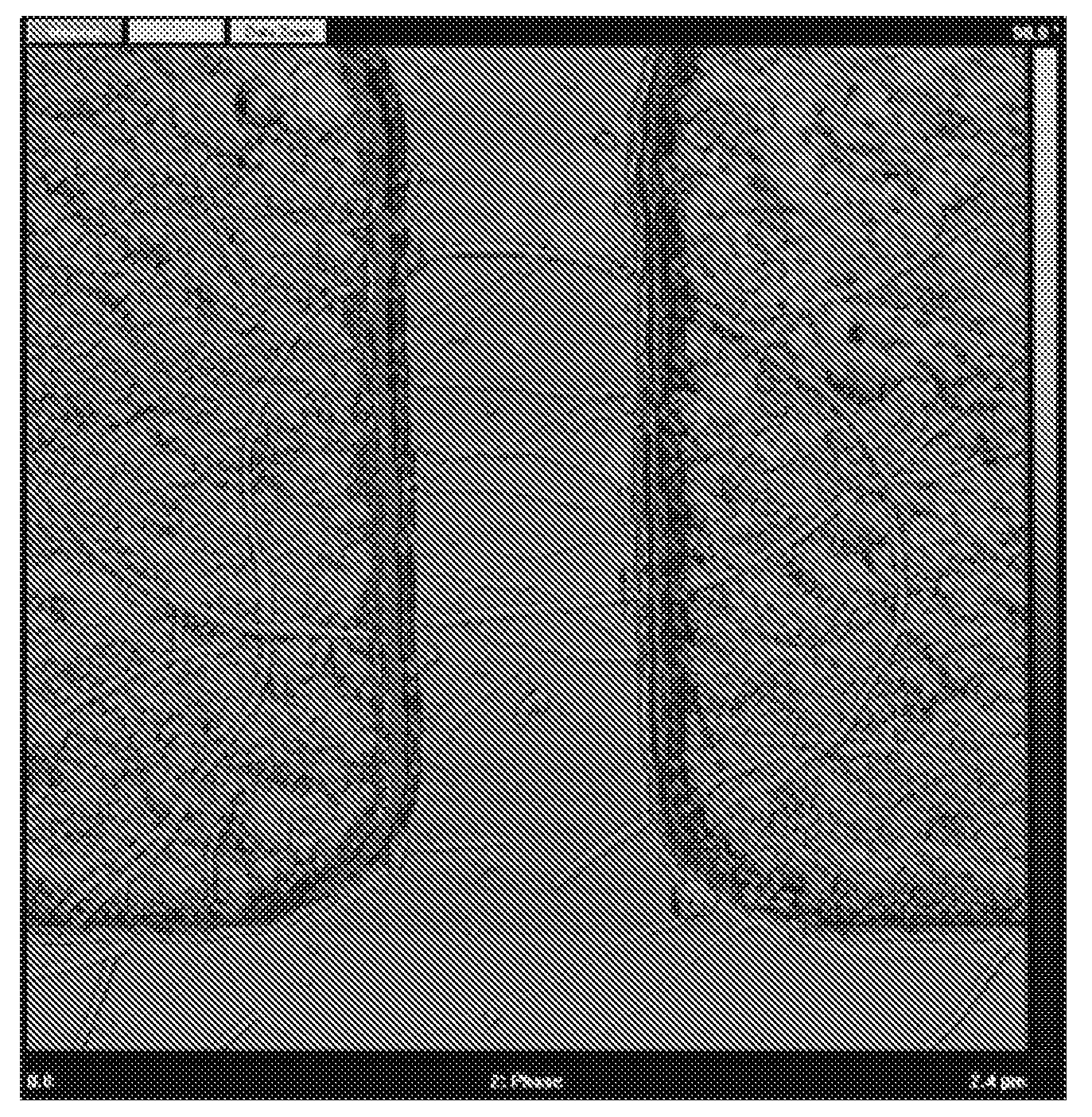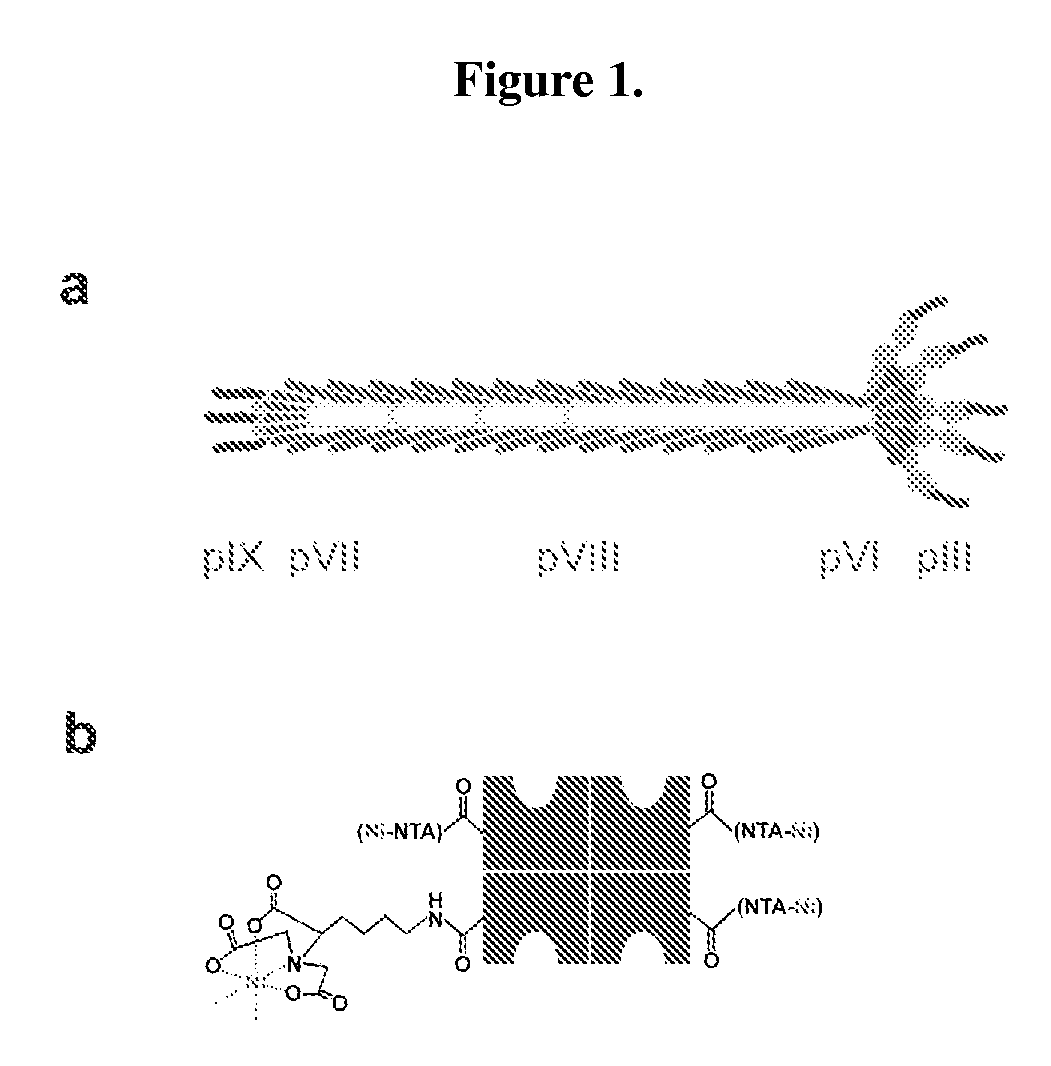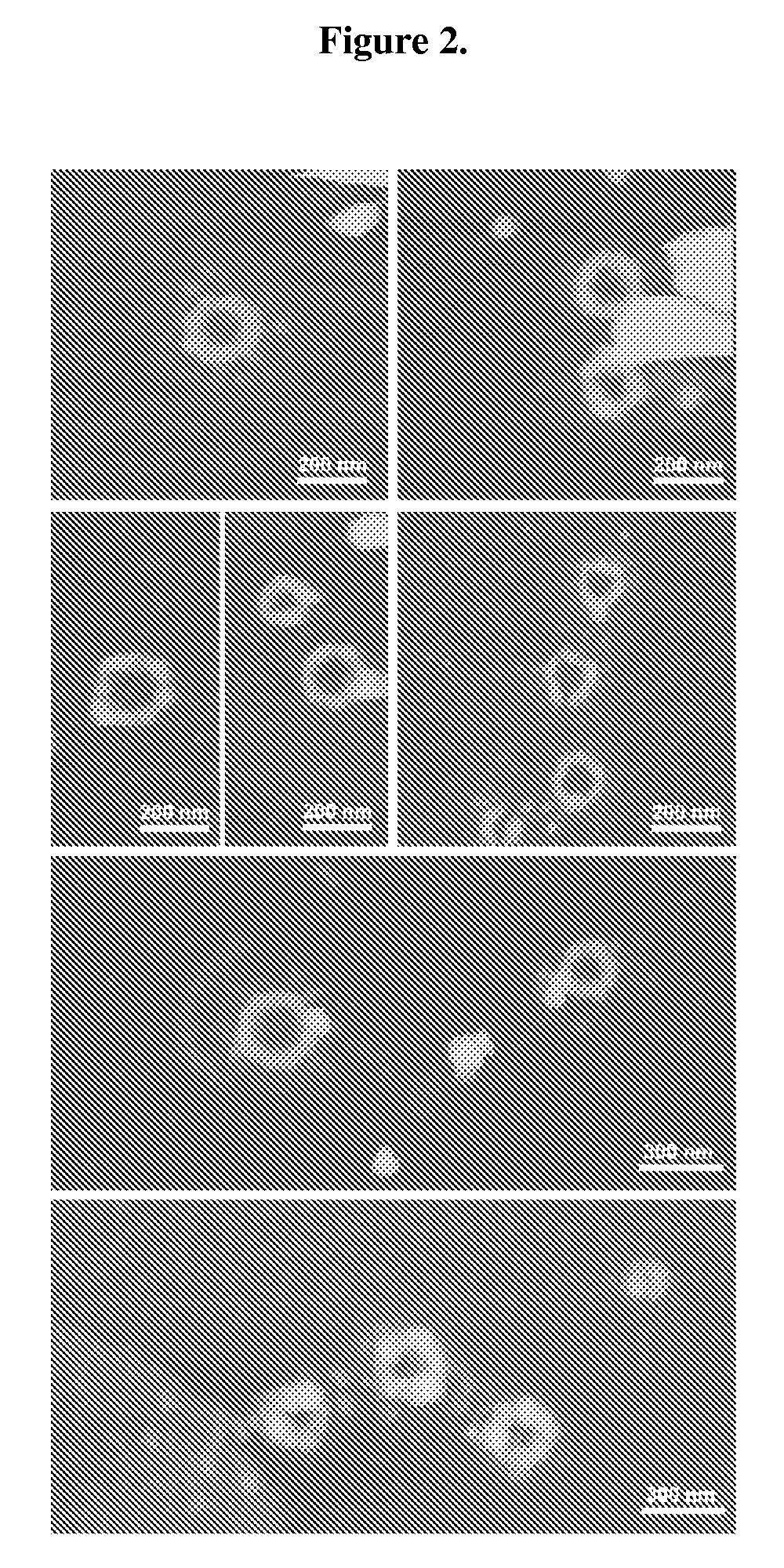Multifunctional biomaterials as scaffolds for electronic, optical, magnetic, semiconducting, and biotechnological applications
a biomaterial and multifunctional technology, applied in the field of multifunctional biomaterials, can solve the problems of laborious chemical modification, limited potential of these other systems for assembling devices, and difficult nucleation of materials by these other systems
- Summary
- Abstract
- Description
- Claims
- Application Information
AI Technical Summary
Benefits of technology
Problems solved by technology
Method used
Image
Examples
Embodiment Construction
I. Introduction
[0038]One skilled in the art can also refer to Nam et al., Nano Lett., 2003, 4, 23-27 and provisional application “MULTIFUNCTIONAL BIOMATERIALS AS SCAFFOLDS FOR ELECTRONIC, OPTICAL, MAGNETIC, SEMICONDUCTING, AND BIOTECHNOLOGICAL APPLICATIONS”, 60 / 511,102 filed Oct. 15, 2003 to Belcher et al., which are incorporated by reference in their entirety, including figures, claims, and working examples.
[0039]In practice of the present invention, reference can be made to the paper, C. E. Flynn et al. Acta Materiala, 51:5867-80 (2003) entitled “Viruses as vehicles for growth, organization, and assembly of materials.” This reference, as well as all references cited in the specification, are incorporated herein by reference in their entirety. In particular, reference 16 (Mao et al., PNAS) is hereby incorporated by reference for all of its teachings including the nucleation and structures shown in FIG. 1. Also, in particular, reference 17 (Flynn et al., J. Mater. Chem) is also inco...
PUM
 Login to View More
Login to View More Abstract
Description
Claims
Application Information
 Login to View More
Login to View More - R&D
- Intellectual Property
- Life Sciences
- Materials
- Tech Scout
- Unparalleled Data Quality
- Higher Quality Content
- 60% Fewer Hallucinations
Browse by: Latest US Patents, China's latest patents, Technical Efficacy Thesaurus, Application Domain, Technology Topic, Popular Technical Reports.
© 2025 PatSnap. All rights reserved.Legal|Privacy policy|Modern Slavery Act Transparency Statement|Sitemap|About US| Contact US: help@patsnap.com



